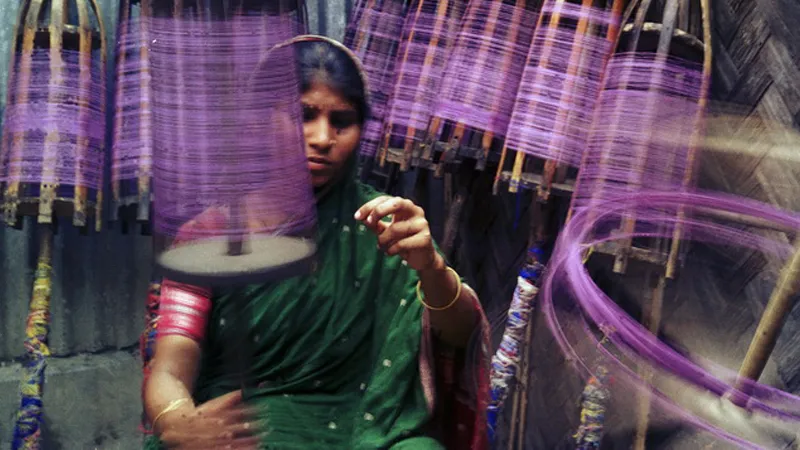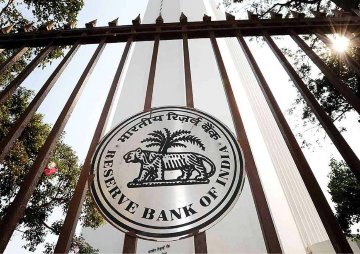In a trip to Bangladesh after a gap of nearly two years I observed quite a few changes that marked economic progress. Many more up-market shops and designer boutiques have sprung up in posh areas of Dhaka, including a hijab boutique. The roads are full of huge SUVs, CNG auto rickshaws, cycle rickshaws and a few small cars which reflect the economic divide within the population. Either people are very rich or they belong to the lower middle class. The inequality of incomes is widening because real estate prices have skyrocketed and people owning houses have sold them to become rich overnight. People without property however remain poor! Many old houses have been replaced by swanky glass and steel malls. And there are lots of restaurants.
Bangladesh with a population of 157.9 million is a riverine country and has the fertile soil of a delta region, but it is also susceptible to cyclones and floods. Despite the frequent natural calamities, Bangladesh is experiencing 6.5 percent GDP growth because of its hard working population, especially the women. Many more women on the streets are now wearing hijab and burkha than before. But, one can also see salwar-kameez clad women going about their work alone. They are working in shops, banks, offices and hotels etc. Women’s labour participation rate is higher at 58 percent as compared to India’s 27 percent and their independent incomes though smaller than men’s, are helping to empower them.
Ready made garment (RMG) manufacturing by women is safer than before because of the regular electricity supply — thanks to India’s power supply of 500 MW plus the recent 100 MW of additional power from Tripura, to Bangladesh. The infamous Rana Plaza garment factory collapse was due to the vibrations from generators as electricity failed frequently in the already unsafe building, causing it to crumble.
The textile industry of Bangladesh that includes RMG is growing at a rapid pace and it is the second largest garment exporter after China. Bengal muslin was world famous during the British era, but the British government swamped the Indian market with cheap machine made textiles from Lancashire and Manchester and managed to kill the muslin production.Today Bangladeshi textiles have again become important and since it enjoys special status of a least developed country under the Generalized System of Preferences (a preferential tariff system), it gets duty free access to EU. After the Rana Plaza disaster and Tazrin Fashion fire, the US suspended the privilege of free access under the GSP for apparels assembled in Bangladesh in 2013. US wants Bangladesh to do more for workers’ safety and the GSP has not been given back. Yet, exports are booming and it is the largest apparel exporter of western brands today. Bangladesh’s garments exports are high at $26 billion (2015) and higher than India’s.
Bangladesh gives many incentives to potential investors in EPZs which include a 10 year tax holiday, exemption on income tax on salaries paid to foreign nationals for three years, and dividend tax exemptions for the period of the tax holiday. Foreign investment is coming ($1.7 billion in 2015) specially from Saudi Arabia which is interested in gas and oil exploration, power and transportation. UAE is interested in ship building.
The ship building and ship breaking industries are shaping up well. Bangladesh has the world’s largest ship breaking industry employing over 200,000 people in Chittagong. A side product of ship breaking is the scrap steel which provides for half of all steel used in Bangladesh’s industries. Other artifacts like ceramic bowls and plates which have been recovered from ships before they are broken up are also interesting by products. Bangladesh itself is producing beautiful ceramics and leather products. Building medium sized and small ships is also a growing industry and enjoying a niche market.
At the airport like before, I found hundreds of Bangladeshis heading for the Middle East especially to Saudi Arabia (which has 3.5 million Bangladeshis). Most workers are employed in menial jobs abroad and their remittances have helped finance urban growth. Gulf jobs are increasing at a slower pace, but the emigration to other countries continues unabated. Bangladeshi cooks can be found worldwide because they can dish out Italian, American, Chinese or French food.
On the whole, there seem to be no stops to Bangladesh becoming an emerging market economy. Bangladesh has improved its human development indicators. Being a small country, and more homogenous than India — in terms of language and religion, social programmes can be better implemented. Many educated women are spending their time in villages running NGOs for primary education and women’s health rather than doing corporate jobs. The ‘fellow feeling’ is much more evident in Bangladesh than in India. Perhaps it is because Bangladesh is not divided by the caste system that progress is faster than in India.
Mobile phones have helped micro credit and there are many small enterprises as a result in the countryside. Private banks like Islami Bank are doing brisk business as compared to the public sector banks. The nationalisation undertaken by Sheikh MujiburRahman has been gradually reversed and private enterprise is booming.
Of course on the flip side, there is the chaotic traffic of Dhaka which can drive anyone nuts. The traffic jams can take hours to clear. The congestion in the big cities is quite suffocating and there is also growing intolerance of liberals and minorities.
Increase in public Investment in infrastructure is badly needed and is increasing. With more flyovers, metro rail and highways, Dhaka could be another Bangkok. Corruption is however endemic to the system like in India and if reduced, the benefits would flow to the poor just like it would in India.
Bangladesh’s prosperity will only lead to greater demand for Indian goods and services. Also the migration would be less as job opportunities increase. Bangladesh could be a part of the ASEAN in the future, something India should take note of and it could become a middle income country sooner than later ! Instead of treating our immediate neighbour as a source of potential immigrants, we should treat it as a country of business opportunities. Indian investors can also take advantage of its low wage costs.
This article originally appeared in The Tribune.
The views expressed above belong to the author(s). ORF research and analyses now available on Telegram! Click here to access our curated content — blogs, longforms and interviews.




 PREV
PREV


